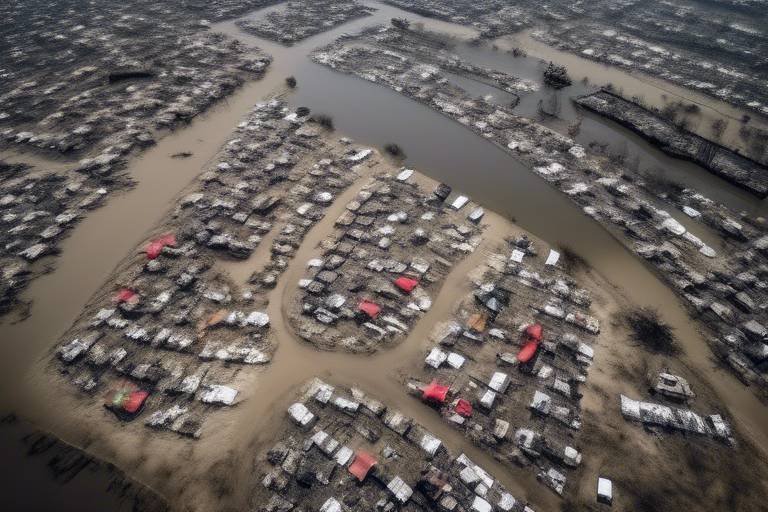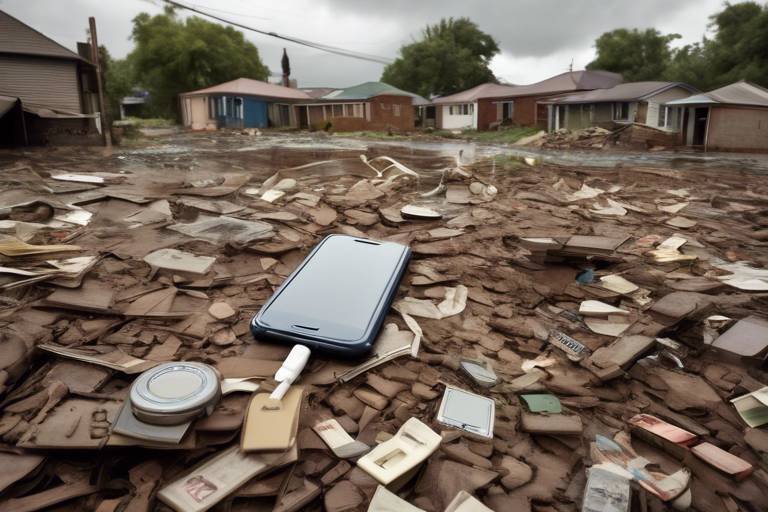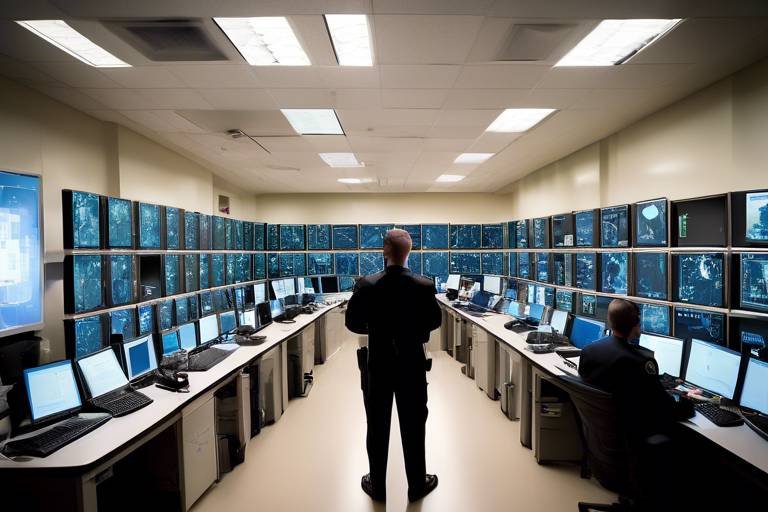How Drones are Changing Disaster Response Strategies
Drones have become a game-changer in the realm of disaster response, and their impact is nothing short of revolutionary. Imagine a scene where a natural disaster has struck—roads are blocked, communication lines are down, and traditional rescue methods are hampered by the chaos. In such scenarios, drones swoop in like modern-day superheroes, equipped with cutting-edge technology to survey the damage, locate victims, and deliver essential supplies. Their ability to provide real-time data and imagery is transforming how emergency responders operate, making them more effective and efficient than ever before.
One of the most significant advantages of drones is their speed. In disaster situations, every second counts. Drones can quickly assess affected areas, capturing high-resolution images that help responders understand the extent of the damage. This rapid data collection allows for a more informed response, enabling teams to prioritize their efforts where they are needed most. For instance, a drone can fly over a flooded region, identifying stranded individuals and mapping out safe routes for rescue teams. This capability not only saves time but also reduces risks to human responders who would otherwise have to navigate hazardous conditions.
Moreover, the versatility of drones is astounding. They come in various shapes and sizes, each tailored for specific tasks. Whether it’s a fixed-wing drone covering vast distances or a multirotor drone hovering over a collapsed building for close-up inspections, each type plays a crucial role in disaster management. This adaptability means that drones can be deployed in a variety of scenarios, from earthquakes and floods to wildfires and hurricanes, making them indispensable tools in modern emergency response.
However, it’s not just about the technology; it’s about the people behind it. Skilled operators are essential for maximizing the effectiveness of drones in disaster response. These individuals not only pilot the drones but also analyze the data they collect, turning raw information into actionable insights. As the technology continues to evolve, training programs and certifications will become increasingly important, ensuring that operators are well-equipped to handle the complexities of disaster scenarios.
In addition to improving situational awareness and operational efficiency, drones also offer a cost-effective solution for disaster response. Traditional methods often require extensive manpower and resources, driving up costs significantly. Drones, on the other hand, can accomplish tasks with fewer personnel and less equipment, which translates to lower operational expenses. This cost-effectiveness makes it easier for organizations to allocate funds where they are most needed, ultimately enhancing the overall response efforts.
As we look to the future, the potential for drones in disaster response is boundless. Innovations in artificial intelligence and automation promise to take drone capabilities to new heights. Imagine drones that can autonomously navigate disaster zones, analyzing data in real time and making decisions without human intervention. This level of autonomy would not only streamline operations but also allow human responders to focus on more complex tasks, further improving the efficiency of disaster management.
In conclusion, drones are not just a passing trend; they are reshaping the landscape of disaster response strategies. With their ability to provide rapid assessments, enhance situational awareness, and reduce costs, drones are proving to be vital assets in emergency management. As technology continues to advance, we can expect even more innovative applications of drones in the future, making our response to disasters quicker, safer, and more effective.
- What types of drones are most effective in disaster response?
Both fixed-wing and multirotor drones have their unique advantages. Fixed-wing drones are great for covering large areas quickly, while multirotor drones excel in close-range inspections and hovering capabilities. - How do drones improve situational awareness during disasters?
Drones provide real-time aerial imagery and data, allowing responders to assess the situation quickly and make informed decisions regarding resource allocation. - What are the main challenges associated with using drones in disaster response?
Challenges include regulatory hurdles, technical limitations like battery life and payload capacity, and the need for skilled operators to manage the drones effectively. - How can drones be made more autonomous in the future?
Advancements in artificial intelligence and machine learning are expected to enhance drone autonomy, allowing them to perform tasks with minimal human intervention.

Introduction to Drones in Disaster Response
Drones have emerged as powerful tools in disaster management, enabling rapid assessment and response. Imagine a scenario where a natural disaster strikes, and within moments, aerial views of the affected area are captured, providing crucial data to first responders. This is not just a futuristic vision; it's happening now. The versatility and efficiency of drones have revolutionized traditional methods, allowing for enhanced situational awareness and improved coordination among response teams.
In the chaos following a disaster, time is of the essence. Drones can be deployed quickly and can cover vast areas in a fraction of the time it would take ground teams. They are equipped with advanced technologies such as high-resolution cameras, thermal imaging, and even LiDAR sensors, which can penetrate dense foliage to locate survivors or assess damage. This capability makes drones an invaluable asset in various disaster scenarios, including:
- Earthquakes: Quickly mapping affected regions to identify the most severely impacted areas.
- Floods: Monitoring water levels and assessing damage to infrastructure.
- Wildfires: Conducting aerial surveys to track fire spread and locate hotspots.
Moreover, the integration of drones into disaster response strategies fosters better communication among response teams. They can relay real-time data to command centers, allowing for informed decision-making and resource allocation. As we delve deeper into this topic, it becomes clear that drones are not just a technological novelty; they are reshaping how we respond to disasters, making operations faster, safer, and more effective.
However, while the benefits are substantial, there are challenges that come with the use of drones in disaster response. Understanding these challenges is crucial for maximizing their potential and ensuring that they are used effectively in times of crisis. Let’s explore the various types of drones utilized in disaster scenarios and their unique advantages in the following sections.

Types of Drones Used
Drones have become indispensable in disaster response scenarios, and their effectiveness largely hinges on the type of drone deployed. Various types of drones cater to specific needs during emergencies, each boasting unique features and capabilities. In this section, we will explore the primary types of drones utilized in disaster management: fixed-wing drones, multirotor drones, and hybrid drones. Understanding the strengths and weaknesses of each type can significantly enhance their deployment in critical situations.
Fixed-wing drones are particularly well-suited for covering vast areas quickly. These drones resemble traditional aircraft and can fly longer distances without needing to recharge as frequently. Their ability to gather high-resolution imagery makes them perfect for mapping disaster-affected regions and assessing damage from a bird's-eye view. Imagine being able to scan a sprawling area devastated by an earthquake in just a few minutes; that’s the power fixed-wing drones bring to the table.
On the other hand, multirotor drones have gained popularity due to their agility and ability to hover in place. This makes them invaluable for close-range inspections and real-time video feeds during search and rescue missions. Picture a drone hovering over a collapsed building, providing live footage to rescue teams on the ground, guiding them to potential survivors. Their versatility allows them to navigate tight spaces and deliver supplies directly to those in need.
Lastly, hybrid drones combine the best features of both fixed-wing and multirotor designs, offering a balanced approach to disaster response. They can take off and land like multirotors while maintaining the long-range capabilities of fixed-wing drones. This versatility is particularly beneficial in complex environments where conditions may change rapidly, allowing for seamless transitions between aerial surveys and close-range operations.
| Type of Drone | Advantages | Limitations |
|---|---|---|
| Fixed-Wing Drones | Extended flight times, high-resolution imagery, covers large areas efficiently | Requires runways, less maneuverable in tight spaces |
| Multirotor Drones | Agility, ability to hover, excellent for close-range tasks | Shorter flight times, limited range compared to fixed-wing |
| Hybrid Drones | Combines benefits of both types, versatile in various environments | Generally more complex and expensive |
In summary, the choice of drone type can significantly influence the effectiveness of disaster response operations. Each type offers distinct advantages and faces unique challenges, making it essential for response teams to select the appropriate drone based on the specific needs of the situation. As technology continues to evolve, we can expect even more innovative solutions to emerge, further enhancing the capabilities of drones in disaster management.
- What are the primary types of drones used in disaster response? The main types include fixed-wing drones, multirotor drones, and hybrid drones, each serving different purposes based on their design and capabilities.
- How do fixed-wing drones differ from multirotor drones? Fixed-wing drones are designed for long-distance flights and cover large areas efficiently, while multirotor drones are more agile, capable of hovering, and better suited for close-range inspections.
- What are the advantages of using drones in disaster response? Drones offer faster data collection, enhanced situational awareness, reduced risk to human responders, and improved logistics for delivering aid.
- What challenges do drones face in disaster response? Challenges include regulatory hurdles, technical limitations like battery life and payload capacity, and the need for skilled operators.
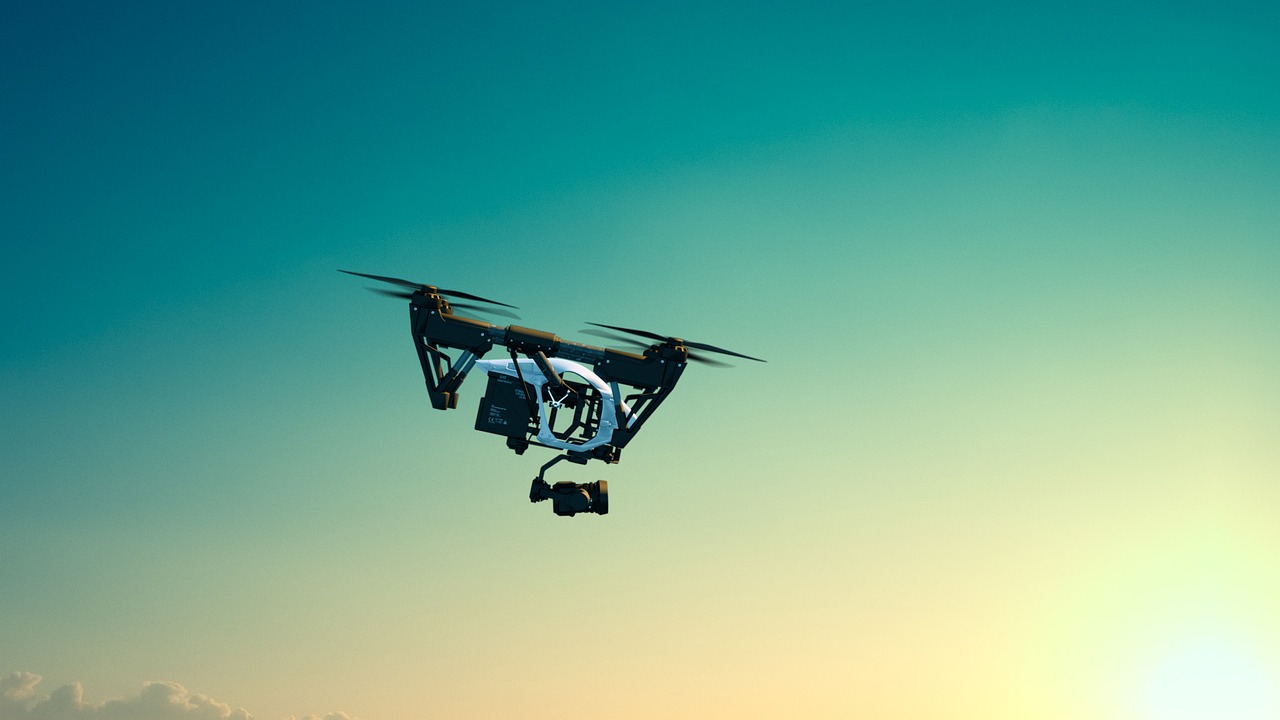
Fixed-Wing Drones
Fixed-wing drones have become a game-changer in the realm of disaster response. Unlike their multirotor counterparts, these drones are designed for efficiency and speed, making them particularly effective for covering vast areas in a short amount of time. Imagine being able to survey an entire disaster-stricken region in a fraction of the time it would take with traditional methods; that’s the power of fixed-wing drones. With their elongated wings and streamlined design, they can glide smoothly through the air, allowing for longer flight durations and the ability to travel greater distances without needing to recharge or refuel.
One of the standout features of fixed-wing drones is their capability to collect high-resolution imagery over large swathes of land. This is crucial during disasters, where understanding the extent of damage is imperative for effective response. These drones can be equipped with advanced sensors and high-definition cameras that capture detailed images, which can then be analyzed to assess the situation accurately. For instance, when a hurricane strikes, fixed-wing drones can fly over the affected areas, providing real-time data that helps emergency teams prioritize their efforts.
However, it's essential to recognize the advantages and limitations of fixed-wing drones. On the positive side, their extended flight times and greater payload capacities allow them to carry a variety of sensors, from thermal imaging cameras to multispectral sensors that can detect changes in vegetation health after a disaster. This versatility enhances their effectiveness in various scenarios, such as:
- Mapping disaster-affected regions: Fixed-wing drones can create detailed maps that inform responders about the terrain and infrastructure.
- Assessing damage: High-resolution imagery helps in understanding the severity of the disaster, which is crucial for resource allocation.
- Monitoring environmental changes: They can track changes in the environment post-disaster, such as flooding or landslides.
Despite these advantages, fixed-wing drones do have some limitations. For example, they require runways for takeoff and landing, which can be a significant hurdle in disaster scenarios where space is limited or damaged. Additionally, while they excel in covering large areas, their maneuverability in tight spaces is not as robust as that of multirotor drones. This means that in situations where precise navigation is necessary, such as searching for survivors in collapsed buildings, fixed-wing drones might not be the best fit.
In summary, fixed-wing drones are a vital asset in disaster response, providing extensive coverage and detailed aerial data that can significantly enhance situational awareness. Their ability to traverse large distances efficiently makes them invaluable for mapping and assessing damage in the wake of disasters. However, their operational constraints must be considered to maximize their effectiveness in emergency situations.
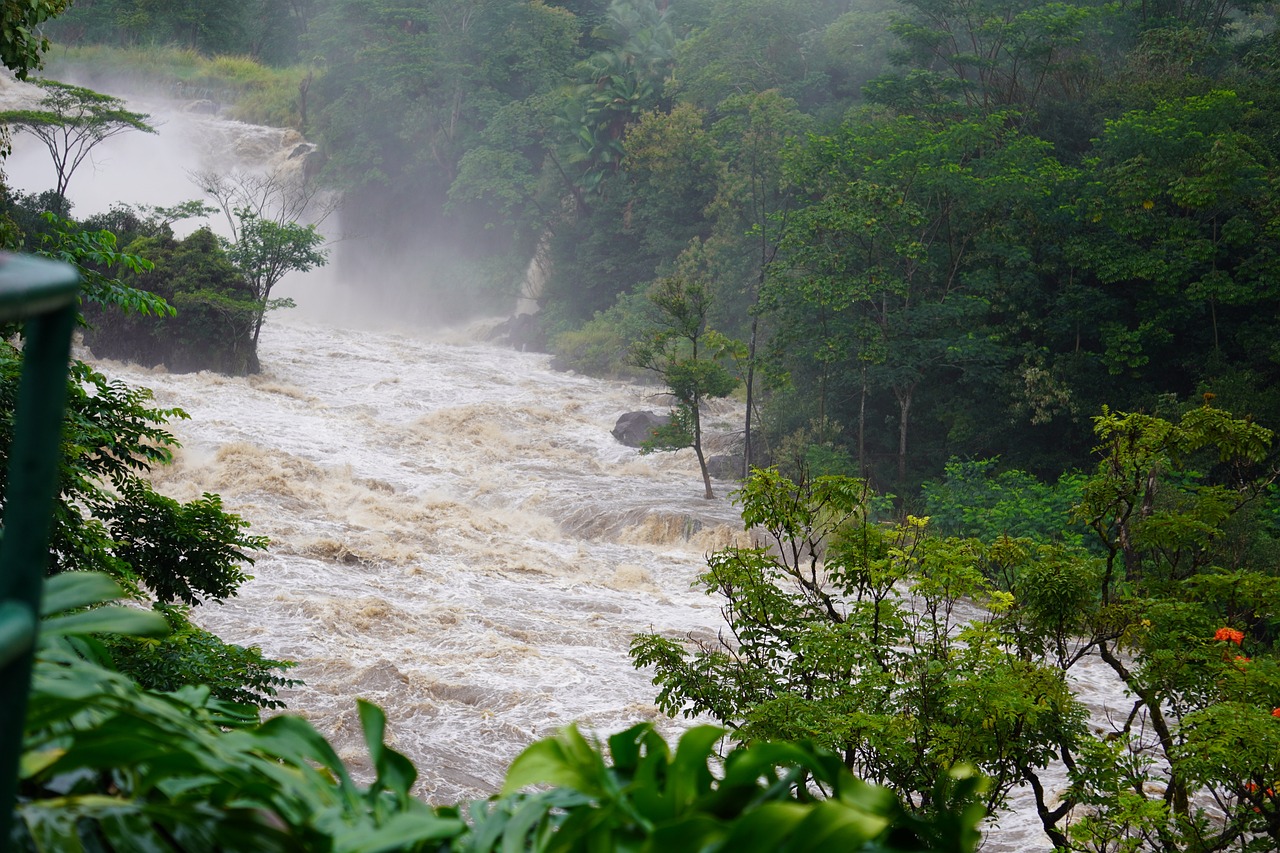
Advantages of Fixed-Wing Drones
Fixed-wing drones bring a plethora of advantages to the table, especially when it comes to disaster response. One of their most significant benefits is their extended flight time. Unlike multirotor drones that typically have shorter battery lives, fixed-wing drones can cover larger distances without the need for frequent recharging. This capability is crucial in disaster scenarios where time is of the essence, and every second counts.
Another major advantage is their greater payload capacity. Fixed-wing drones can be equipped with advanced sensors, high-resolution cameras, and even supplies for disaster-stricken areas. This means they can not only survey damage from the air but also deliver essential resources like medical supplies, food, and water directly to those in need. Imagine a fixed-wing drone soaring high above a flood-affected region, capturing detailed images while simultaneously dropping life-saving materials to stranded individuals.
Moreover, fixed-wing drones excel in operating in challenging environments. Their aerodynamic design allows them to withstand adverse weather conditions better than their multirotor counterparts. This resilience is vital during disasters, where conditions can be unpredictable and harsh. For instance, while a multirotor might struggle in high winds, a fixed-wing drone can maintain stability and continue its mission, ensuring that vital data is collected and aid is delivered.
To summarize the advantages of fixed-wing drones, consider the following:
- Extended Flight Times: Capable of covering vast areas without frequent recharges.
- Greater Payload Capacities: Can carry advanced equipment and supplies for immediate delivery.
- Enhanced Stability: Better suited for adverse weather conditions, ensuring mission success.
These features make fixed-wing drones an indispensable asset in the toolkit of disaster response teams. They not only facilitate rapid assessments of affected areas but also play a crucial role in delivering timely assistance, ultimately saving lives and alleviating suffering during some of the most challenging times.
Q: What are fixed-wing drones primarily used for in disaster response?
A: Fixed-wing drones are primarily used for aerial surveys, damage assessments, and delivering supplies to disaster-stricken areas.
Q: How do fixed-wing drones compare to multirotor drones?
A: Fixed-wing drones are better for covering large areas and have longer flight times, while multirotor drones excel in agility and hover capabilities for close-range inspections.
Q: Are there any limitations to using fixed-wing drones?
A: Yes, fixed-wing drones require runways for takeoff and landing, which can limit their deployment in certain situations.
Q: Can fixed-wing drones operate in bad weather?
A: They are generally more resilient in adverse weather conditions compared to multirotor drones, but extreme weather can still pose challenges.

Limitations of Fixed-Wing Drones
While fixed-wing drones offer remarkable advantages in terms of flight duration and area coverage, they are not without their limitations. One of the primary challenges is the requirement for a runway or a designated area for takeoff and landing. This can pose significant hurdles in disaster scenarios where suitable locations may be limited or obstructed by debris. Imagine a chaotic scene after a hurricane: the last thing you want is to be searching for a clear stretch of land to launch your drone.
Additionally, fixed-wing drones typically lack the maneuverability that multirotor drones possess. In tight or densely packed environments, such as urban disaster zones, navigating around obstacles can become a daunting task. While multirotor drones can hover and change direction swiftly, fixed-wing models are designed for speed and distance, making them less suited for intricate inspections or search operations in confined spaces.
Another significant limitation is their battery life. Although they can fly longer distances than their multirotor counterparts, the operational time is still finite. In emergency situations, where every second counts, the need to return to base for recharging or battery replacement can delay critical assessments and responses. Moreover, the payload capacity, while generally larger than that of multirotor drones, can still be restrictive. This limitation means that fixed-wing drones may not be able to carry the most advanced sensors or equipment needed for specific missions.
Lastly, adverse weather conditions can greatly impact the performance of fixed-wing drones. High winds, rain, or snow can affect their stability and control, leading to potential crashes or loss of data. In disaster response, where conditions can be unpredictable, this vulnerability poses a significant risk. Therefore, while fixed-wing drones are powerful tools, understanding and addressing their limitations is crucial for effective deployment in disaster response scenarios.
- What are the main advantages of using fixed-wing drones?
Fixed-wing drones excel in covering large areas quickly, offering longer flight times and greater payload capacities compared to multirotor drones. They are ideal for mapping and surveying extensive disaster zones.
- Can fixed-wing drones operate in urban environments?
While they can operate in urban areas, their lack of maneuverability makes them less effective for close-range inspections. Multirotor drones are often preferred for such tasks due to their agility.
- How do weather conditions affect fixed-wing drone operations?
Adverse weather conditions such as high winds and heavy rain can significantly impact the stability and control of fixed-wing drones, potentially leading to operational failures.
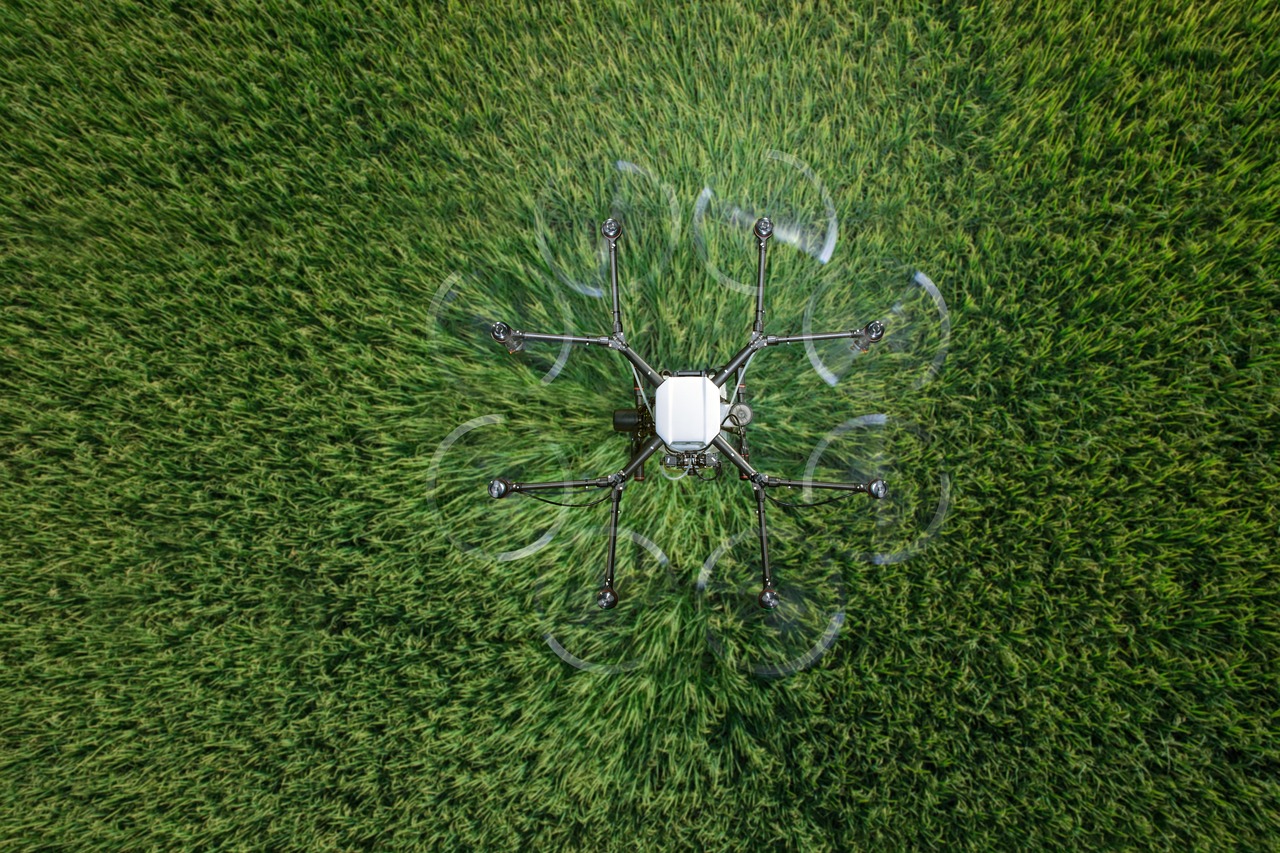
Multirotor Drones
Multirotor drones have become a staple in disaster response due to their remarkable agility and versatility. Unlike their fixed-wing counterparts, these drones can hover in place, making them exceptionally useful for close-range inspections and real-time video feeds. Imagine being able to send a drone into a disaster zone to capture live footage of a collapsed building or flooded area; this capability can be a game-changer for emergency responders. In situations where every second counts, the ability to get a bird's-eye view can provide critical insights that inform rescue operations.
One of the standout features of multirotor drones is their maneuverability. They can easily navigate through tight spaces, which is invaluable in urban environments where obstacles abound. For instance, during search and rescue missions, these drones can be flown into narrow alleyways or over debris to locate survivors, offering a level of accessibility that traditional methods simply cannot match. Their ability to operate at low altitudes also allows for detailed inspections of structures, which can help assess damage more accurately.
Furthermore, multirotor drones are equipped with advanced sensors and cameras that can capture high-definition images and videos. This technology enables responders to analyze situations from multiple angles, improving their understanding of the disaster's impact. The data collected can then be transmitted in real-time back to command centers, allowing for rapid decision-making. In essence, multirotor drones act as the eyes in the sky, providing information that can be critical for effective resource allocation and strategic planning.
However, it's essential to acknowledge that multirotor drones also come with their own set of challenges. Battery life is often a limiting factor, as these drones typically have shorter flight durations compared to fixed-wing models. This limitation means that while they are excellent for short missions, they may need to return to base more frequently for recharging, which can slow down operations in a fast-paced disaster response scenario. Nevertheless, ongoing advancements in battery technology and energy efficiency are expected to mitigate these concerns in the near future.
In conclusion, multirotor drones are transforming the landscape of disaster response. Their unique capabilities allow for quick assessments and real-time data collection, ultimately enhancing the effectiveness of emergency operations. As technology continues to evolve, we can anticipate even greater advancements that will further empower these agile machines in saving lives and aiding recovery efforts.
- What are the main advantages of using multirotor drones in disaster response?
Multirotor drones offer agility, the ability to hover, and high-definition imaging capabilities, making them ideal for close inspections and real-time data collection. - How do multirotor drones compare to fixed-wing drones?
While fixed-wing drones are better for covering large areas quickly, multirotor drones excel in maneuverability and can operate in tight spaces. - What are the limitations of multirotor drones?
Battery life is a significant limitation, as multirotor drones typically have shorter flight times compared to fixed-wing models. - How is the data collected by multirotor drones used in disaster response?
The data is transmitted in real-time to command centers, aiding in situational assessment and decision-making for resource allocation.

Benefits of Using Drones
This article explores the transformative impact of drones on disaster response, highlighting their applications, benefits, and challenges while providing insights into future advancements in this crucial field.
Drones have emerged as powerful tools in disaster management, enabling rapid assessment and response. Their versatility and efficiency have revolutionized traditional methods, allowing for enhanced situational awareness and improved coordination among response teams.
Various types of drones are employed in disaster scenarios, including fixed-wing, multirotor, and hybrid models. Each type has unique advantages, making them suitable for different tasks such as aerial surveys, delivery of supplies, and search operations.
Fixed-wing drones are ideal for covering large areas quickly and efficiently. They can fly longer distances, making them suitable for mapping disaster-affected regions and assessing damage from the air with high-resolution imagery.
These drones offer extended flight times and greater payload capacities, allowing them to carry advanced sensors and cameras. Their ability to operate in challenging environments enhances their effectiveness in disaster response operations.
Despite their advantages, fixed-wing drones require runways for takeoff and landing, limiting their deployment in certain situations. They may also be less maneuverable in tight spaces compared to multirotor drones.
Multirotor drones are known for their agility and ability to hover in place. They are particularly useful for close-range inspections and real-time video feeds, making them invaluable during search and rescue missions.
The integration of drones in disaster response offers numerous benefits that can significantly enhance the effectiveness of emergency operations. One of the most compelling advantages is the ability to collect data rapidly and accurately. Imagine being able to survey an entire disaster zone in a fraction of the time it would take traditional ground teams. Drones can capture high-resolution images and videos, providing responders with real-time insights that are crucial for effective decision-making.
Moreover, the use of drones greatly reduces the risk to human responders. In scenarios where conditions are perilous—such as collapsed buildings or hazardous environments—drones can be deployed to gather information without putting lives at risk. This capability not only protects human life but also allows for a more efficient allocation of resources. For instance, responders can focus their efforts where they are most needed, rather than wasting time in dangerous areas.
Another significant benefit is the cost-effectiveness of drone operations. Traditional disaster response methods often require extensive manpower and resources, which can be both time-consuming and expensive. Drones streamline the process, enabling quicker data collection and reducing the need for large teams on the ground. This efficiency can lead to substantial savings, allowing funds to be redirected toward other critical needs.
Additionally, drones enhance situational awareness. With the ability to provide real-time aerial imagery and data, responders can assess the situation quickly and accurately. This enhanced situational awareness facilitates better decision-making and resource allocation during critical moments. For example, during a flood, drones can quickly identify the most affected areas, enabling teams to prioritize their response effectively.
In summary, the benefits of using drones in disaster response are manifold. They include:
- Faster data collection: Drones can gather information more quickly than traditional methods.
- Reduced risk to human responders: Drones can operate in hazardous environments without endangering lives.
- Cost-effectiveness: Drones minimize operational costs by streamlining processes and reducing manpower needs.
- Enhanced situational awareness: Real-time data allows for more informed decision-making.
Despite their advantages, the use of drones in disaster response comes with challenges, including regulatory issues, technical limitations, and the need for skilled operators. Addressing these challenges is essential for maximizing their potential.
Navigating the complex regulatory landscape can hinder drone deployment during emergencies. Understanding and complying with local laws and airspace restrictions is crucial for effective and timely disaster response operations.
Drones may face technical challenges such as battery life, payload capacity, and adverse weather conditions. These limitations can impact their performance and reliability in critical situations, necessitating ongoing advancements in drone technology.
The future of drones in disaster response looks promising, with advancements in artificial intelligence, automation, and improved sensors. These trends are expected to enhance their capabilities and expand their roles in emergency management.
The integration of artificial intelligence into drone systems will enable smarter decision-making and autonomous operations. AI can enhance data analysis, allowing for quicker identification of critical areas needing assistance during disasters.
Future drones are likely to feature greater levels of autonomy, reducing the need for human intervention. This shift will allow for more efficient operations, particularly in high-risk environments where human responders may be endangered.
1. How do drones improve disaster response?
Drones enhance disaster response by providing rapid data collection, reducing risks to human responders, and improving situational awareness.
2. What types of drones are commonly used in disaster scenarios?
Common types include fixed-wing drones for large area coverage and multirotor drones for close-range inspections.
3. Are there any legal restrictions on using drones in emergencies?
Yes, there are regulatory hurdles that vary by location, including airspace restrictions and local laws that must be navigated.
4. What are the future trends for drones in disaster management?
Future trends include increased integration of AI, enhanced autonomy, and improved sensor technologies for better performance.
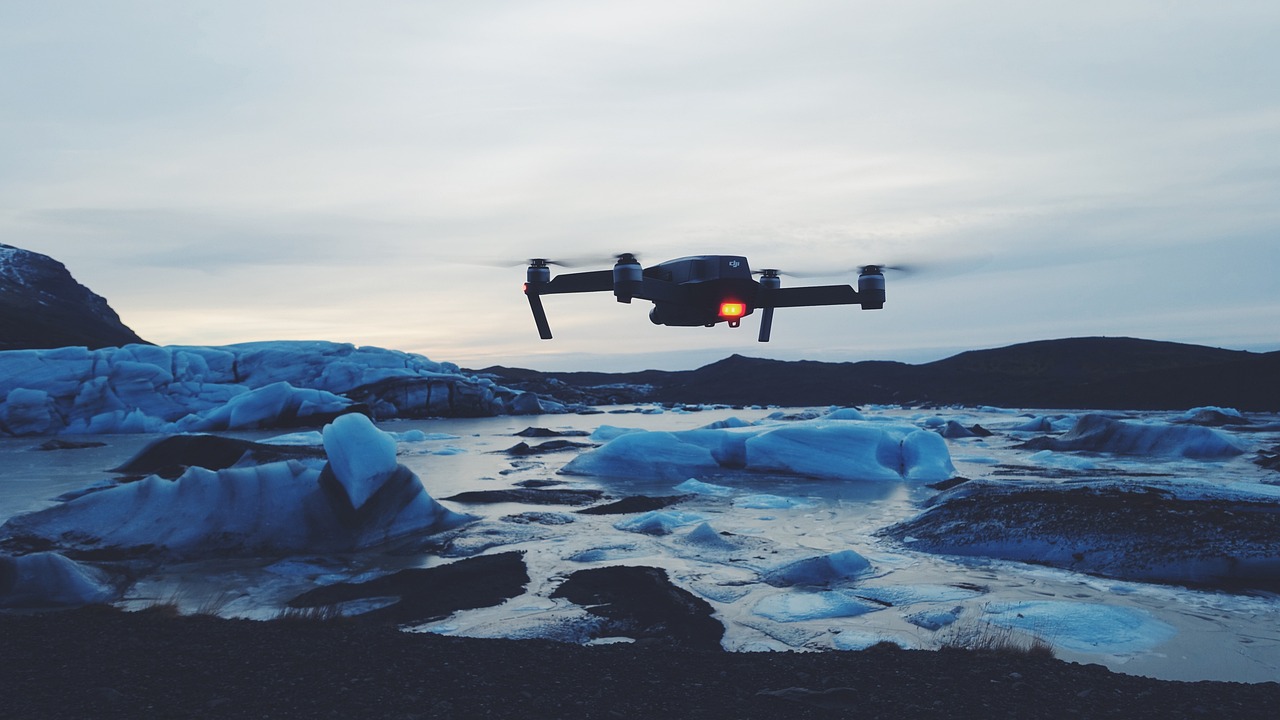
Enhanced Situational Awareness
In the chaotic aftermath of a disaster, having a clear and comprehensive view of the situation is crucial for effective response. Drones play an indispensable role in enhancing situational awareness by providing real-time aerial imagery and data that ground teams can utilize to make informed decisions. Imagine being able to see the entire landscape from above, spotting where help is most urgently needed, and identifying safe routes for responders—all within minutes of a disaster striking. This capability not only speeds up the assessment process but also allows for a more strategic allocation of resources.
One of the standout features of drone technology is its ability to capture high-resolution images and videos that can be analyzed on the fly. This real-time data collection enables emergency responders to:
- Identify Affected Areas: Quickly pinpoint regions that have sustained the most damage, allowing for prioritized rescue operations.
- Monitor Changing Conditions: Keep track of evolving situations, such as flooding or landslides, which can change rapidly and pose new threats.
- Assess Infrastructure Damage: Evaluate the integrity of buildings, bridges, and roads to determine safe access points for rescue teams.
Moreover, the integration of advanced sensors and imaging technologies, such as thermal cameras and LiDAR, enhances the drone's ability to gather critical data. For instance, thermal imaging can detect heat signatures, making it easier to locate survivors trapped beneath debris. This technology is a game-changer, as it not only saves time but also significantly increases the chances of successful rescues.
In addition to immediate situational awareness, the data collected by drones can be stored and analyzed for future reference. This historical data can aid in post-disaster evaluations and improve preparedness for future incidents. By learning from past events, emergency management agencies can refine their strategies, making them more effective in subsequent disasters.
Ultimately, the enhanced situational awareness provided by drones transforms how we respond to disasters. With their ability to deliver real-time insights, drones empower responders to act swiftly and strategically, which can mean the difference between life and death in critical situations.
- How do drones improve disaster response? Drones provide real-time data and imagery, enabling responders to assess situations rapidly and allocate resources efficiently.
- What types of sensors do drones use for situational awareness? Drones can be equipped with various sensors, including thermal cameras, LiDAR, and high-resolution cameras, to gather critical data.
- Can drones operate in adverse weather conditions? While drones have limitations in extreme weather, advancements are being made to enhance their performance in challenging environments.
- Are there regulations governing the use of drones in disaster response? Yes, drone operations are subject to local regulations and airspace restrictions, which must be navigated for effective deployment.
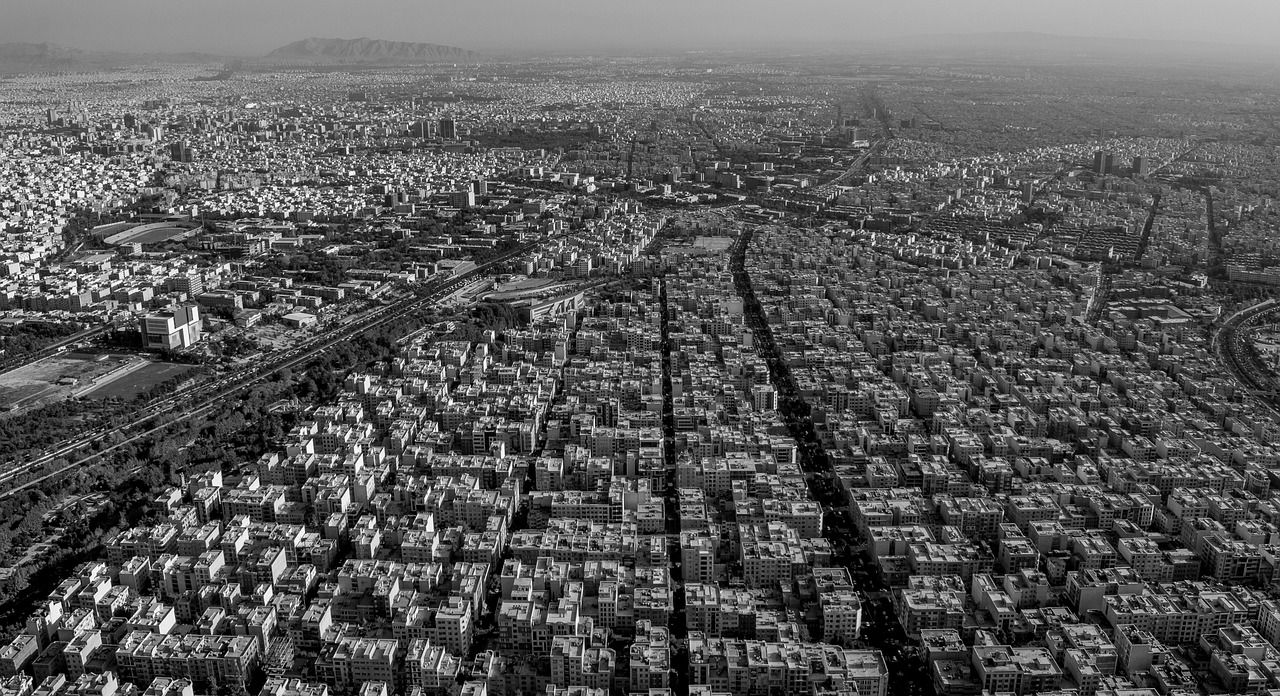
Cost-Effectiveness
When it comes to disaster response, the of using drones cannot be overstated. Traditional methods of disaster management often involve extensive manpower, equipment, and time, leading to significant financial burdens. In contrast, drones provide a more efficient alternative that can dramatically reduce operational costs. For instance, consider the expenses associated with deploying a team of responders to assess damage in a disaster zone. This typically includes travel costs, lodging, meals, and the potential need for specialized equipment. Drones can accomplish the same task with minimal human resources, streamlining the entire process.
One of the most compelling aspects of drone technology is its ability to gather data quickly and accurately. This rapid data collection minimizes the time responders spend on the ground, which not only reduces labor costs but also enhances safety. For example, in the aftermath of a natural disaster, a drone can survey extensive areas in a fraction of the time it would take a human team. This speed translates to faster decision-making and quicker deployment of resources, ultimately saving lives and money.
Moreover, drones come equipped with advanced sensors and imaging technologies that allow for high-resolution data capture. This capability means that responders can make informed decisions based on accurate, up-to-date information. The result? A more effective allocation of resources, ensuring that aid reaches those who need it most without unnecessary delays or expenses.
To illustrate the cost-effectiveness of drones in disaster response, consider the following table that compares the traditional methods versus drone-assisted operations:
| Aspect | Traditional Methods | Drone-Assisted Operations |
|---|---|---|
| Personnel Required | High (10-20 people) | Low (1-3 operators) |
| Time for Damage Assessment | Days | Hours |
| Cost of Deployment | High ($10,000+) | Low ($1,000 - $5,000) |
| Safety Risks | High | Low |
As the table demonstrates, the differences are striking. The reduced number of personnel required for drone operations not only cuts costs but also minimizes risks to human life. In scenarios where conditions are hazardous or unstable, having drones handle the reconnaissance and data collection can be a game-changer.
In conclusion, the integration of drones into disaster response strategies represents a significant leap forward in terms of . By reducing the need for extensive manpower, speeding up data collection, and providing accurate information, drones are reshaping how we approach disaster management. As technology continues to advance, we can expect even greater efficiencies and savings, making this a vital tool in our emergency response arsenal.
- How much can drones reduce costs in disaster response? Drones can reduce operational costs by up to 70% compared to traditional methods by minimizing manpower and speeding up data collection.
- Are drones safe to use in disaster zones? Yes, drones significantly lower the risks to human life by allowing operators to assess dangerous areas remotely.
- What types of data can drones collect during a disaster? Drones can capture high-resolution imagery, thermal data, and even deliver supplies, providing comprehensive situational awareness.
- How long can drones operate in the field? Depending on the model, drones typically have flight times ranging from 20 minutes to several hours, depending on the payload and battery life.
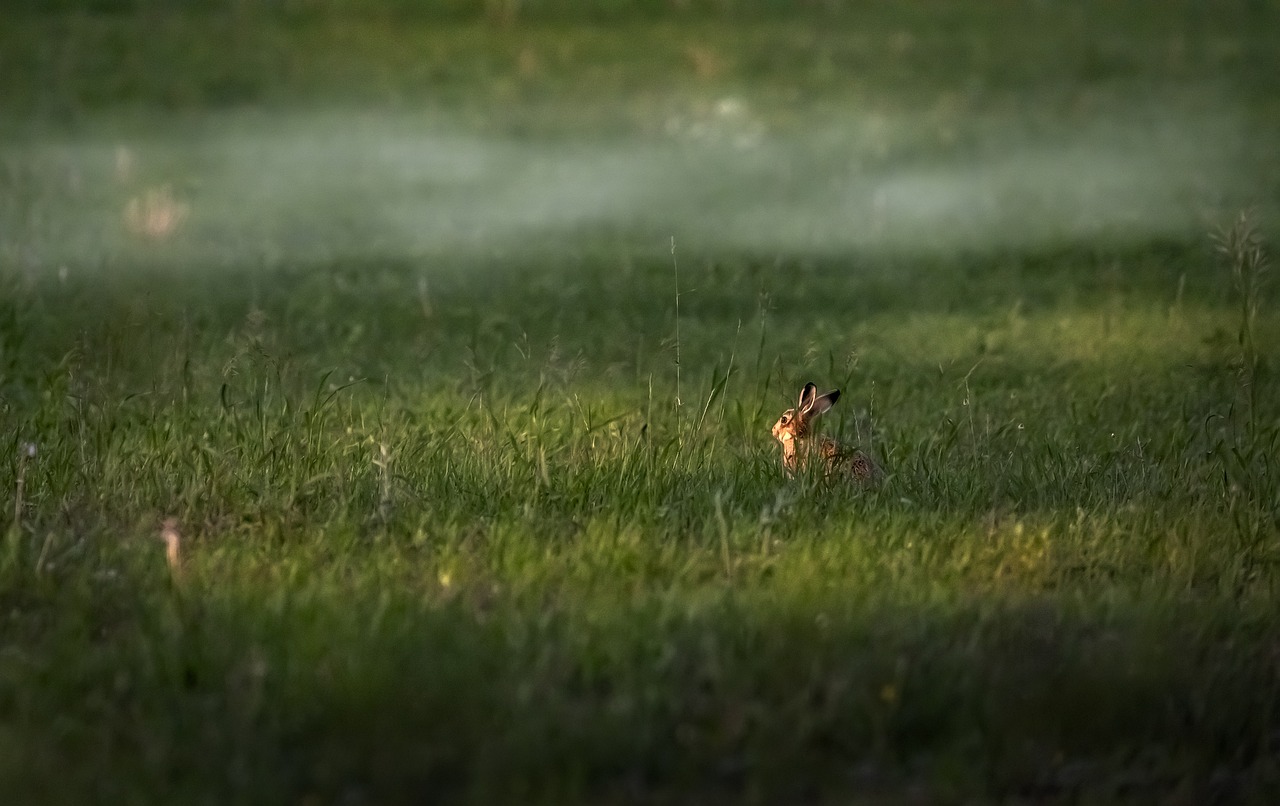
Challenges and Limitations
While the integration of drones into disaster response strategies brings a wealth of opportunities, it is essential to recognize the that accompany their use. These challenges can hinder the effectiveness of drone operations in critical situations, which is why addressing them is paramount for maximizing their potential.
One of the most significant hurdles is the regulatory landscape. Drones must operate within the confines of local laws and airspace restrictions, which can vary widely from one region to another. For instance, during emergencies, the need for rapid deployment can clash with the time-consuming process of obtaining necessary permits. This can lead to delays in response times when every second counts. Therefore, understanding and navigating these regulations is crucial for effective disaster management.
Moreover, technical limitations present another challenge. Drones often face issues such as limited battery life, which can restrict their operational time in the field. For example, a drone with a flight time of only 30 minutes may not be able to cover extensive areas in one go. Additionally, payload capacity can limit the types of sensors and equipment that can be carried. If a drone cannot carry the necessary tools for a specific task, its utility is diminished. Furthermore, adverse weather conditions can severely impact drone performance, making it difficult to deploy them during heavy rain, strong winds, or snow.
To illustrate these challenges, consider the following table that outlines some common drone limitations:
| Challenge | Description |
|---|---|
| Regulatory Issues | Complex laws and airspace restrictions can delay deployment. |
| Battery Life | Limited operational time affects area coverage and data collection. |
| Payload Capacity | Restrictions on the types of equipment that can be carried. |
| Weather Conditions | Adverse weather can hinder drone functionality and safety. |
Additionally, the need for skilled operators cannot be overlooked. Drones, while becoming more user-friendly, still require a level of expertise to operate effectively, especially in high-pressure situations. Training programs are essential to ensure that responders are equipped with the necessary skills to leverage drone technology fully. Without proper training, the potential of drones may remain untapped, leading to missed opportunities for enhancing disaster response.
In summary, while drones offer transformative potential in disaster response, it is crucial to address these challenges. By navigating regulatory hurdles, overcoming technical limitations, and ensuring that operators are well-trained, we can unlock the full capabilities of drones and enhance their effectiveness in saving lives and providing timely assistance during disasters.
- What are the main advantages of using drones in disaster response? Drones enable rapid data collection, enhance situational awareness, and reduce risks to human responders.
- How do regulatory issues affect drone deployment? Regulatory complexities can delay the use of drones in emergencies, impacting response times.
- What technical limitations do drones face? Drones often struggle with battery life, payload capacity, and performance in adverse weather conditions.
- Is training necessary for drone operators? Yes, proper training is essential for effective drone operation, especially in high-pressure disaster scenarios.
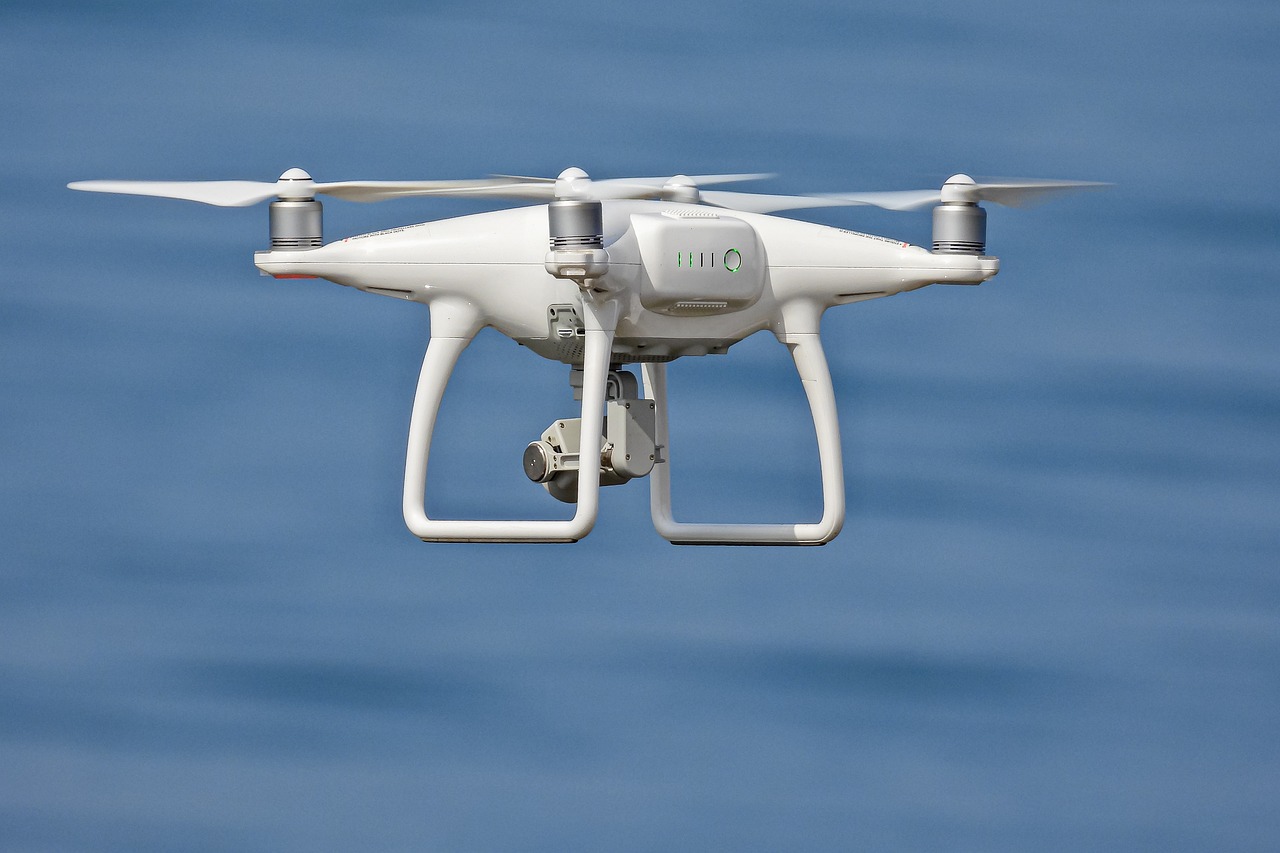
Regulatory Hurdles
The deployment of drones in disaster response is not without its challenges, and one of the most significant hurdles is navigating the complex web of regulatory requirements. Different countries and regions have their own sets of rules governing airspace, drone operation, and safety protocols. This can create a maze of regulations that responders must maneuver through, often resulting in delays that can be critical during emergencies.
For instance, many jurisdictions require drone operators to obtain specific licenses or permits before flying, especially in disaster zones where airspace may be restricted due to the presence of manned aircraft or other hazards. These regulations are in place to ensure safety, but they can also slow down the response time when every second counts. Additionally, the lack of standardized regulations across different regions can lead to confusion among responders who may be operating in unfamiliar territories.
Moreover, compliance with local laws is essential. In some cases, local authorities may impose additional restrictions that can further complicate operations. For example, in densely populated areas, drones might be prohibited from flying over certain neighborhoods or buildings, limiting their effectiveness in delivering aid or conducting search operations. Understanding these nuances is crucial for effective disaster response.
To illustrate the regulatory landscape, consider the following table that outlines common regulatory challenges faced by drone operators in disaster scenarios:
| Regulatory Challenge | Description |
|---|---|
| Licensing Requirements | Operators may need specific licenses depending on the region, which can delay deployment. |
| Airspace Restrictions | Temporary flight restrictions may be in place during disasters, limiting drone access. |
| Local Regulations | Different regions may have unique laws that complicate drone operations. |
| Insurance Requirements | Some areas may require operators to have specific insurance coverage, adding to the burden. |
In conclusion, while drones offer immense potential for improving disaster response, addressing these is crucial for maximizing their effectiveness. By fostering collaboration between drone operators, regulatory bodies, and emergency management agencies, we can create a more streamlined process that empowers responders to act swiftly and efficiently in times of crisis.
- What are the main regulatory challenges for drone operators? Operators face licensing requirements, airspace restrictions, local regulations, and insurance requirements that can complicate deployment.
- How can regulatory hurdles impact disaster response? Delays due to compliance with regulations can hinder timely aid delivery and search operations during emergencies.
- Is there a standard set of regulations for drone use in disaster response? No, regulations vary widely by country and region, making it essential for operators to understand local laws.
- What steps can be taken to improve regulatory compliance? Collaboration between drone operators and regulatory bodies can help streamline processes and create clearer guidelines.
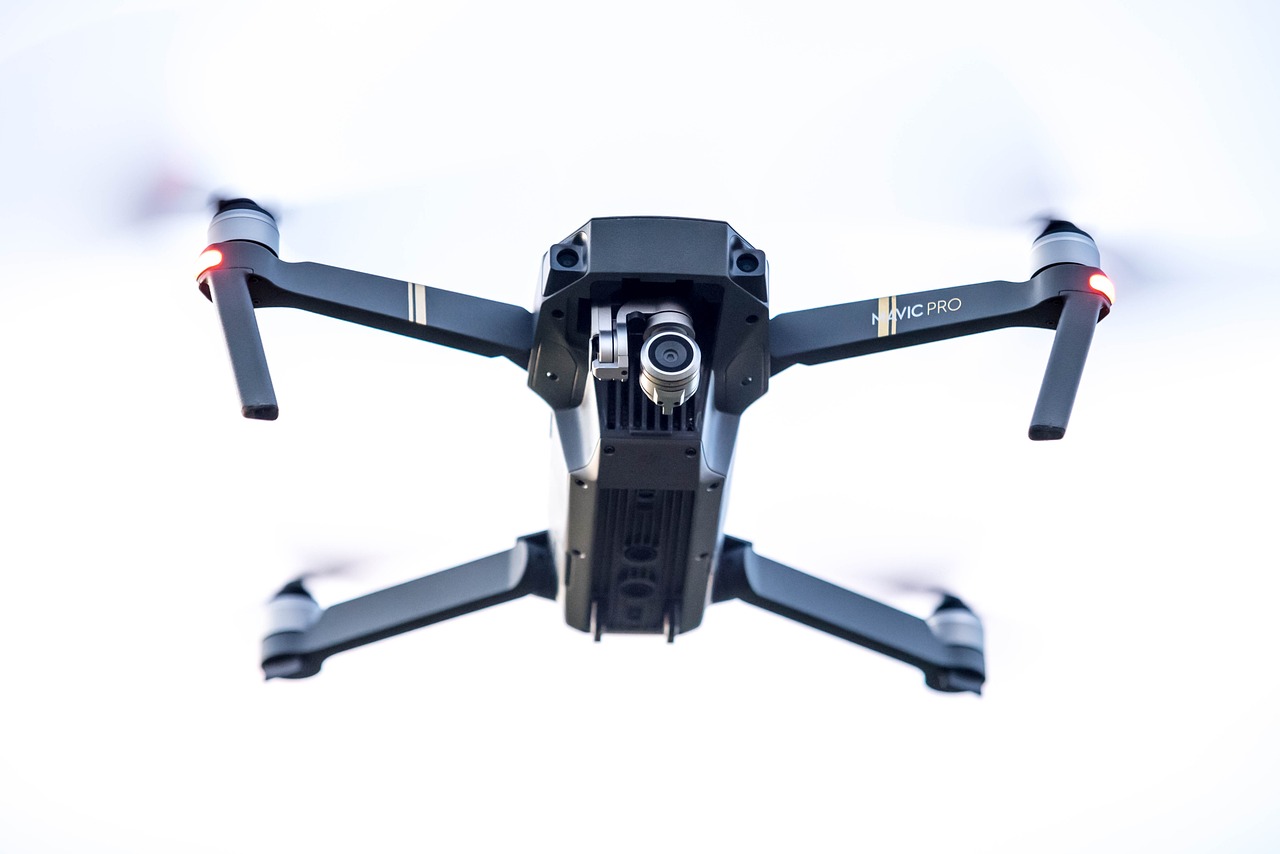
Technical Limitations
While drones have undeniably transformed disaster response strategies, they are not without their . One of the primary concerns is battery life. Most drones are powered by lithium polymer batteries, which typically offer limited flight times—ranging from 20 to 40 minutes depending on the model and payload. This short duration can be a significant drawback during critical operations, as responders may need the drones to remain airborne for extended periods to gather comprehensive data or provide ongoing surveillance.
Another challenge lies in payload capacity. Although some drones can carry advanced sensors and cameras, they still have weight restrictions. This limitation can restrict the type of equipment that can be deployed, potentially reducing the effectiveness of the drone in certain scenarios. For instance, while a drone may be equipped with a high-resolution camera, it may not have the capacity to carry additional sensors necessary for environmental monitoring, which could be crucial in assessing hazardous conditions.
Moreover, adverse weather conditions pose a significant challenge for drone operations. High winds, rain, and snow can severely impact a drone's stability and control, leading to mission failures or crashes. In fact, many drones are designed for optimal performance in calm weather conditions, making them less reliable during severe weather events that often accompany disasters. This can limit their usability when they are needed the most, creating a gap in the response effort.
| Technical Limitations | Impact on Operations |
|---|---|
| Battery Life | Limits flight duration, affecting data collection and surveillance. |
| Payload Capacity | Restricts the types of sensors and equipment that can be deployed. |
| Weather Sensitivity | Adverse conditions can hinder operational effectiveness and safety. |
To overcome these challenges, ongoing advancements in drone technology are crucial. Manufacturers are exploring options such as swappable batteries and larger payload capacities to enhance operational efficiency. Additionally, the development of drones designed to withstand harsh weather conditions will greatly improve their reliability during disasters. As the technology continues to evolve, we can expect drones to become even more effective tools in disaster response, helping to save lives and streamline recovery efforts.
- What are the primary uses of drones in disaster response? Drones are primarily used for aerial surveys, delivering supplies, and search operations.
- How do drones improve situational awareness? They provide real-time aerial imagery and data, allowing responders to assess situations quickly.
- What are the regulatory challenges faced by drone operators? Operators must navigate complex local laws and airspace restrictions, which can hinder deployment during emergencies.
- What advancements are expected in drone technology? Future advancements include AI integration and increased autonomy, enhancing decision-making and operational efficiency.

Future Trends in Drone Technology
The future of drone technology in disaster response is not just bright; it's positively dazzling! As we stand on the brink of a technological revolution, drones are set to become even more integral to emergency management. Innovations in artificial intelligence and automation are leading the charge, promising to enhance the capabilities of these aerial assistants. Imagine drones that not only gather data but also analyze it in real-time, pinpointing areas in dire need of assistance with surgical precision. This is the future we are heading towards!
One of the most exciting prospects is the integration of AI into drone systems. With AI, drones will be able to process vast amounts of data quickly and efficiently. For instance, during a natural disaster, a drone equipped with AI can analyze images of the affected area and identify critical locations that require immediate attention. This capability will not only speed up response times but will also optimize the allocation of resources. Instead of sending teams to assess every inch of a disaster zone, responders can focus on the areas that need it most, saving both time and lives.
Moreover, the push for increased autonomy in drone operations is another trend to watch. Future drones are expected to operate with minimal human intervention, navigating complex environments and making decisions on the fly. This is particularly vital in high-risk situations where human lives are at stake. Imagine a scenario where a drone can autonomously locate and deliver supplies to stranded individuals without waiting for instructions. This level of independence could transform how we approach disaster response, making it faster and safer.
Additionally, advancements in sensor technology are on the horizon. The next generation of drones will likely be equipped with enhanced sensors that can detect not only visual data but also thermal and multi-spectral information. This means that drones could identify survivors trapped under debris or assess the structural integrity of buildings from the air. The ability to gather diverse types of data will be invaluable for responders, allowing them to make informed decisions based on comprehensive situational awareness.
As we look ahead, the potential for drones in disaster response is boundless. With each technological advancement, these flying machines are becoming more capable, reliable, and essential. The combination of AI, increased autonomy, and advanced sensors will not only improve the efficiency of disaster response efforts but also pave the way for innovative applications we haven't even imagined yet.
- What types of disasters can drones assist with?
Drones can be used in various disaster scenarios, including natural disasters like hurricanes, earthquakes, floods, and wildfires, as well as man-made emergencies such as industrial accidents. - Are drones safe to use in disaster response?
Yes, when operated by trained professionals and within regulatory guidelines, drones can enhance safety by reducing the need for personnel to enter hazardous areas. - How do drones collect data during a disaster?
Drones are equipped with cameras and sensors that capture aerial imagery and environmental data, which can then be analyzed to assess damage and identify areas needing assistance. - What are the legal considerations for using drones in emergencies?
Operators must comply with local regulations regarding airspace usage and drone operation, ensuring they have the necessary permissions to deploy drones in disaster scenarios.
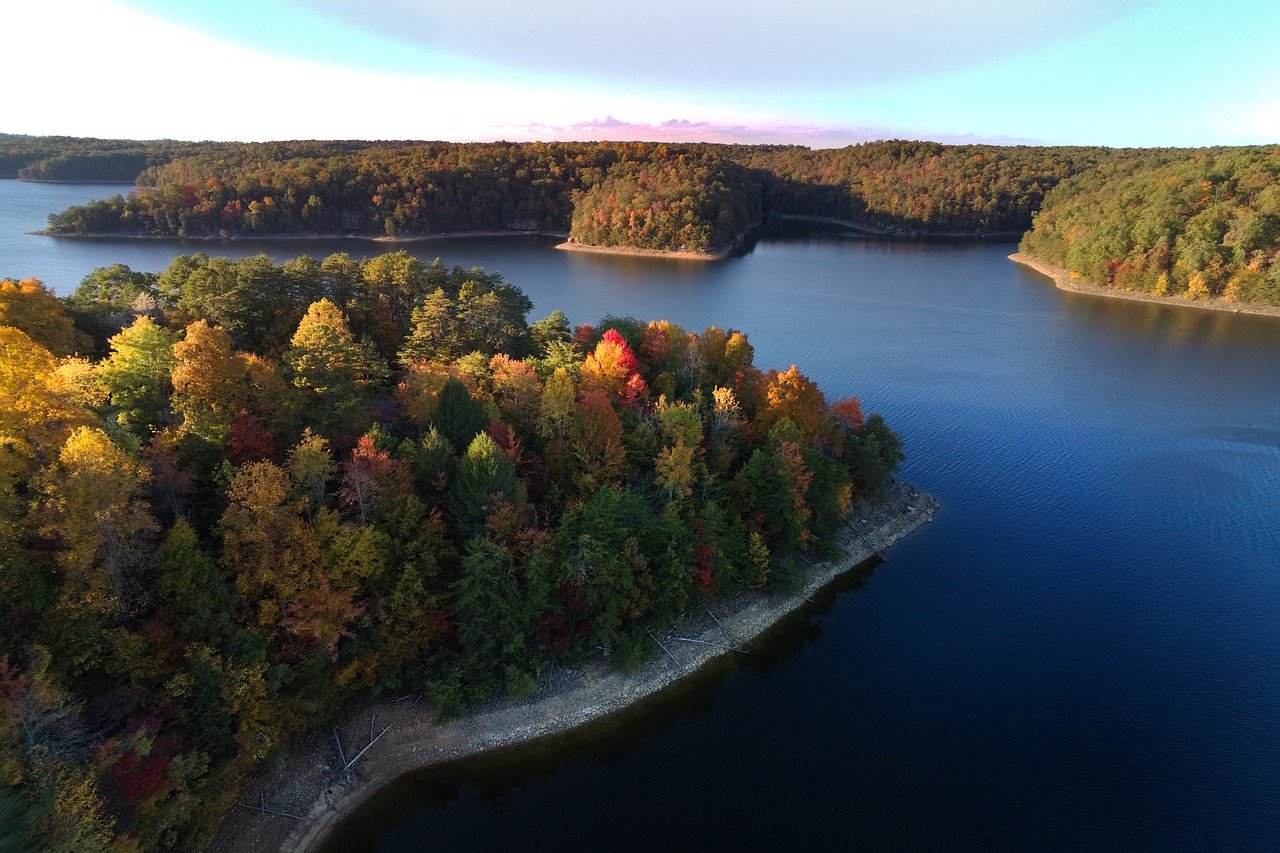
AI Integration
The integration of artificial intelligence (AI) into drone technology is set to revolutionize disaster response strategies in ways we can only begin to imagine. By incorporating AI, drones can process vast amounts of data in real-time, enabling them to make quicker and more accurate decisions. For instance, during a natural disaster, drones equipped with AI can analyze aerial imagery to identify areas that require immediate assistance, significantly speeding up the response time.
One of the most exciting aspects of AI integration is its ability to enhance data analysis. Imagine a scenario where a drone flies over a disaster zone, capturing thousands of images. With AI algorithms, it can sift through this data to pinpoint critical infrastructure damage, locate stranded individuals, or even assess the spread of hazardous materials. This capability not only improves the efficiency of the response teams but also ensures that resources are allocated where they are most needed.
Moreover, AI can facilitate autonomous flight operations. Drones can be programmed to follow predefined paths or respond to real-time data inputs without human intervention. This is particularly advantageous in high-risk environments, such as areas affected by wildfires or floods, where human responders might be in danger. The ability to operate independently allows drones to gather crucial information while keeping human lives safe.
To give you a clearer picture, consider the following table that outlines the benefits of AI integration in drones:
| Benefit | Description |
|---|---|
| Real-time Data Processing | AI enables drones to analyze data as it is collected, providing immediate insights. |
| Autonomous Operations | Drones can operate without human control, increasing safety and efficiency. |
| Improved Decision-Making | AI can identify critical areas needing assistance, allowing for better resource allocation. |
| Enhanced Image Analysis | AI algorithms can detect patterns and anomalies in aerial imagery that humans might miss. |
As we look to the future, the potential for AI in drone technology is immense. With continuous advancements, we can expect drones to take on even more sophisticated roles in disaster management, making them indispensable tools for first responders. The combination of AI and drone technology not only enhances operational capabilities but also paves the way for a more effective and timely disaster response.
- How does AI improve drone efficiency in disaster response? AI enables drones to process and analyze data in real-time, allowing for faster decision-making and improved situational awareness.
- Can drones operate autonomously in disaster zones? Yes, drones equipped with AI can perform autonomous operations, reducing the need for human intervention in dangerous environments.
- What types of data can drones collect during a disaster? Drones can capture aerial imagery, thermal data, and even environmental readings, providing valuable insights for responders.
- Are there any risks associated with using drones in disaster response? While drones enhance capabilities, challenges such as regulatory compliance and technical limitations still exist.
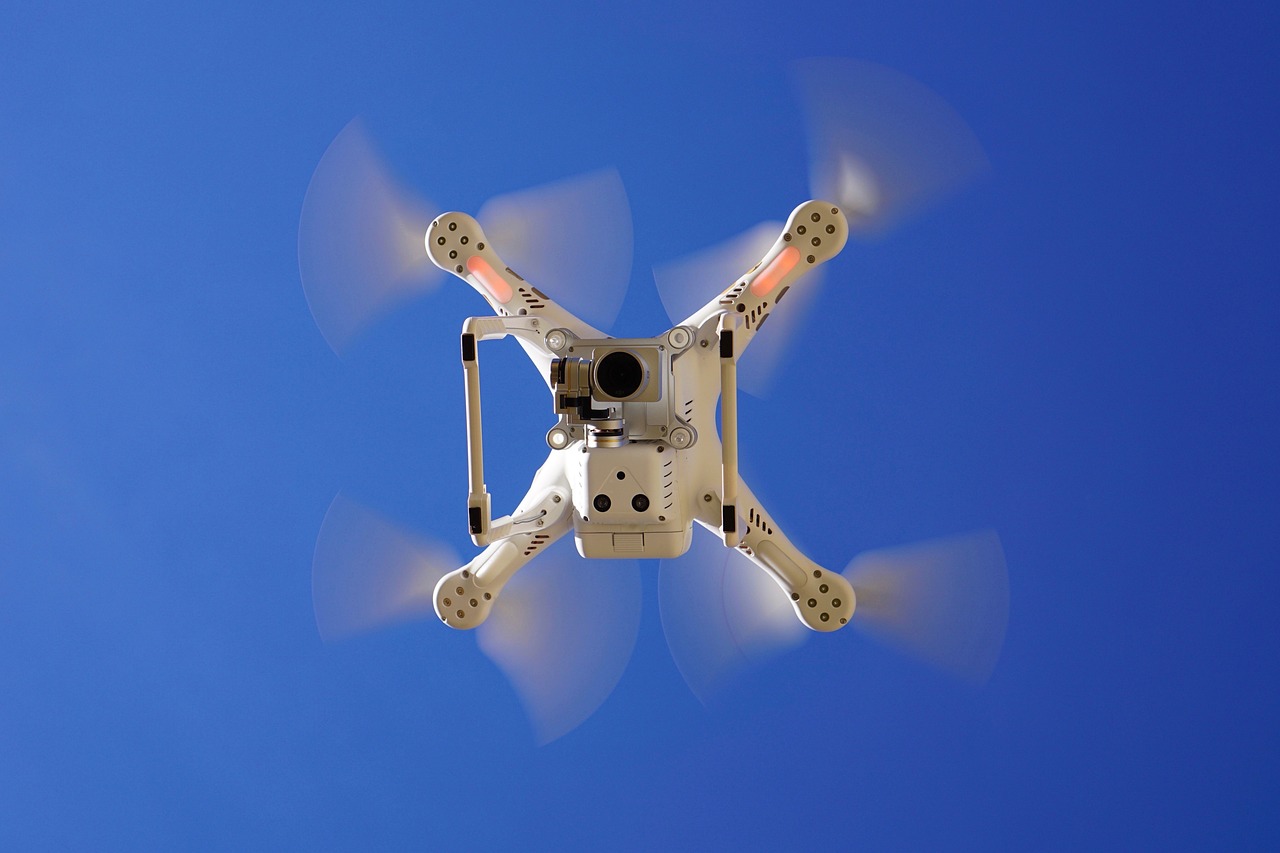
Increased Autonomy
As we look towards the future of drone technology in disaster response, one of the most exciting developments is the of these flying machines. Imagine a world where drones can operate independently, making critical decisions in real-time without the need for constant human oversight. This shift towards autonomy is not just a futuristic dream; it’s becoming a reality thanks to rapid advancements in technology.
Autonomous drones can navigate challenging environments, assess damage, and even deliver supplies with minimal human intervention. This is particularly crucial in disaster scenarios where time is of the essence. For instance, after a natural disaster strikes, every second counts. Autonomous drones can be deployed immediately, flying into areas that may be too dangerous for human responders. They can gather vital information and relay it back to command centers, enabling quicker and more informed decisions.
Moreover, the integration of artificial intelligence is a game-changer. AI algorithms can analyze data collected by drones, identifying patterns and determining the most critical areas requiring assistance. This capability allows for a more focused and efficient response, ensuring that help reaches those in need as quickly as possible. Imagine a drone equipped with AI that can autonomously identify a collapsed building and prioritize it for search and rescue operations, all while avoiding obstacles and navigating through debris!
To illustrate the potential of increased autonomy, consider the following table that outlines some key benefits:
| Benefit | Description |
|---|---|
| Reduced Human Risk | Autonomous drones can operate in hazardous environments, minimizing the risk to human responders. |
| Efficiency | With the ability to make quick decisions, drones can streamline operations and reduce response times. |
| Data Collection | Autonomous drones can gather and analyze data in real-time, providing critical insights for decision-making. |
However, the journey towards full autonomy is not without its challenges. Issues such as regulatory compliance, technological limitations, and the need for robust safety protocols must be addressed. As organizations and governments continue to invest in drone technology, we can expect to see significant progress in overcoming these hurdles.
In conclusion, the increased autonomy of drones in disaster response is set to transform how we approach emergency management. By leveraging advanced technology, we can enhance the effectiveness of our response efforts, ultimately saving more lives and reducing the impact of disasters on communities. The future is bright, and as we embrace these advancements, we move closer to a world where drones are indispensable allies in times of crisis.
- What are the main advantages of using autonomous drones in disaster response?
Autonomous drones offer reduced risk to human responders, increased efficiency in operations, and real-time data collection and analysis, which are crucial for effective disaster management.
- How do drones navigate in challenging environments?
Drones equipped with advanced sensors and AI technology can autonomously navigate obstacles and hazardous areas, making them suitable for deployment in disaster zones.
- What are the challenges of implementing autonomous drones?
Challenges include regulatory compliance, technological limitations such as battery life and payload capacity, and the need for safety protocols to ensure reliable operations.
Frequently Asked Questions
- What types of drones are commonly used in disaster response?
Drones come in various types, with fixed-wing, multirotor, and hybrid models being the most common. Fixed-wing drones are great for covering large areas quickly, while multirotor drones excel in agility and close-range inspections. Each type has unique strengths that make them suitable for specific tasks during disaster situations.
- How do drones enhance situational awareness during disasters?
Drones provide real-time aerial imagery and data, allowing responders to quickly assess the situation from above. This enhanced situational awareness leads to better decision-making and resource allocation, ensuring that help gets to the right places at the right times.
- What are the main benefits of using drones in disaster response?
The integration of drones offers numerous benefits, including faster data collection, reduced risk to human responders, and improved logistics for delivering aid. These advantages contribute to more effective and timely interventions, ultimately saving lives and resources.
- What challenges do drones face in disaster response?
Despite their benefits, drones encounter challenges such as regulatory hurdles, technical limitations, and the need for skilled operators. Navigating complex regulations and ensuring reliable performance in adverse conditions are essential for maximizing their potential in emergencies.
- How is technology advancing the use of drones in disaster response?
The future of drone technology looks bright, with advancements in artificial intelligence, automation, and improved sensors. These trends are expected to enhance drone capabilities, enabling smarter decision-making and greater autonomy in operations, especially in high-risk environments.

